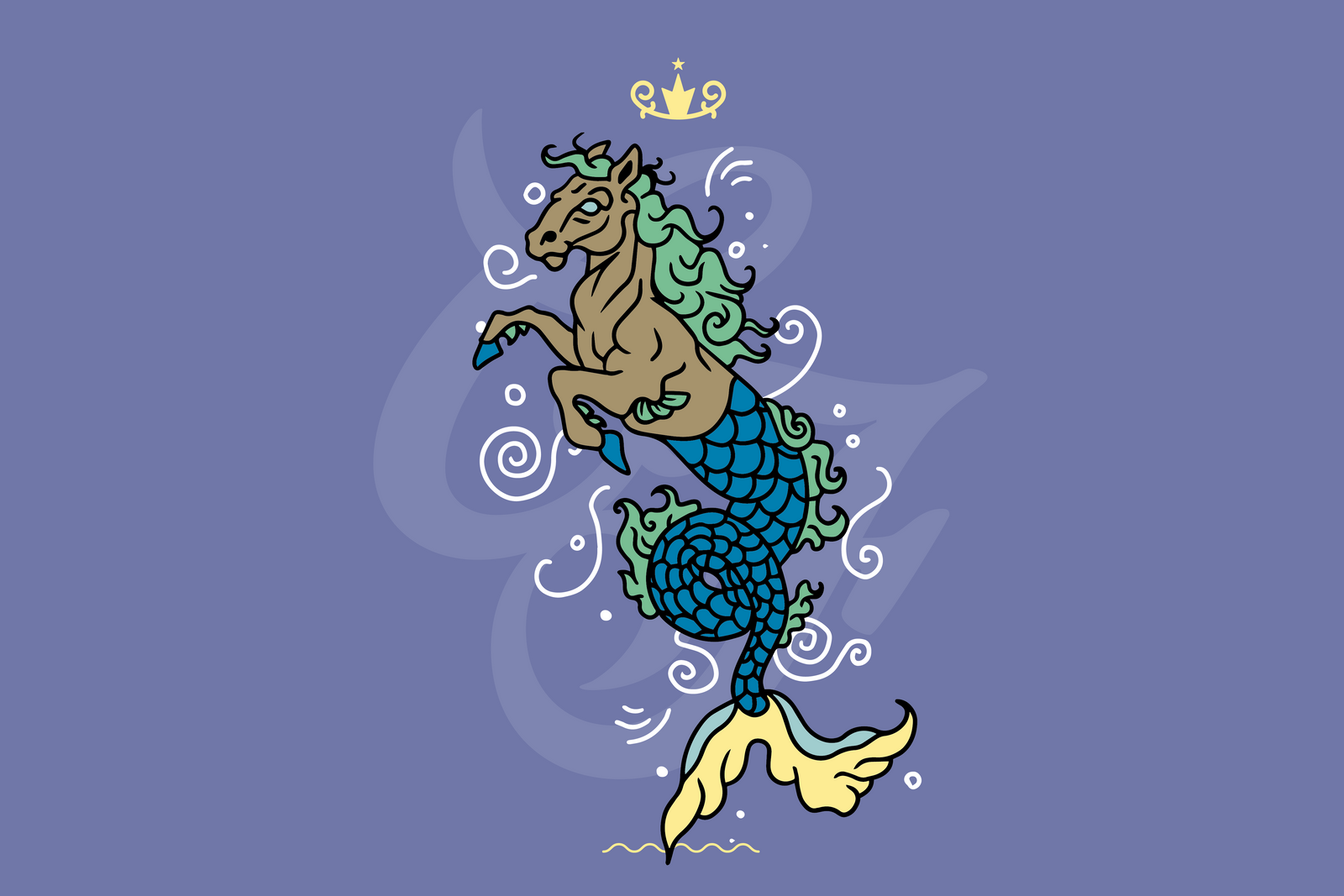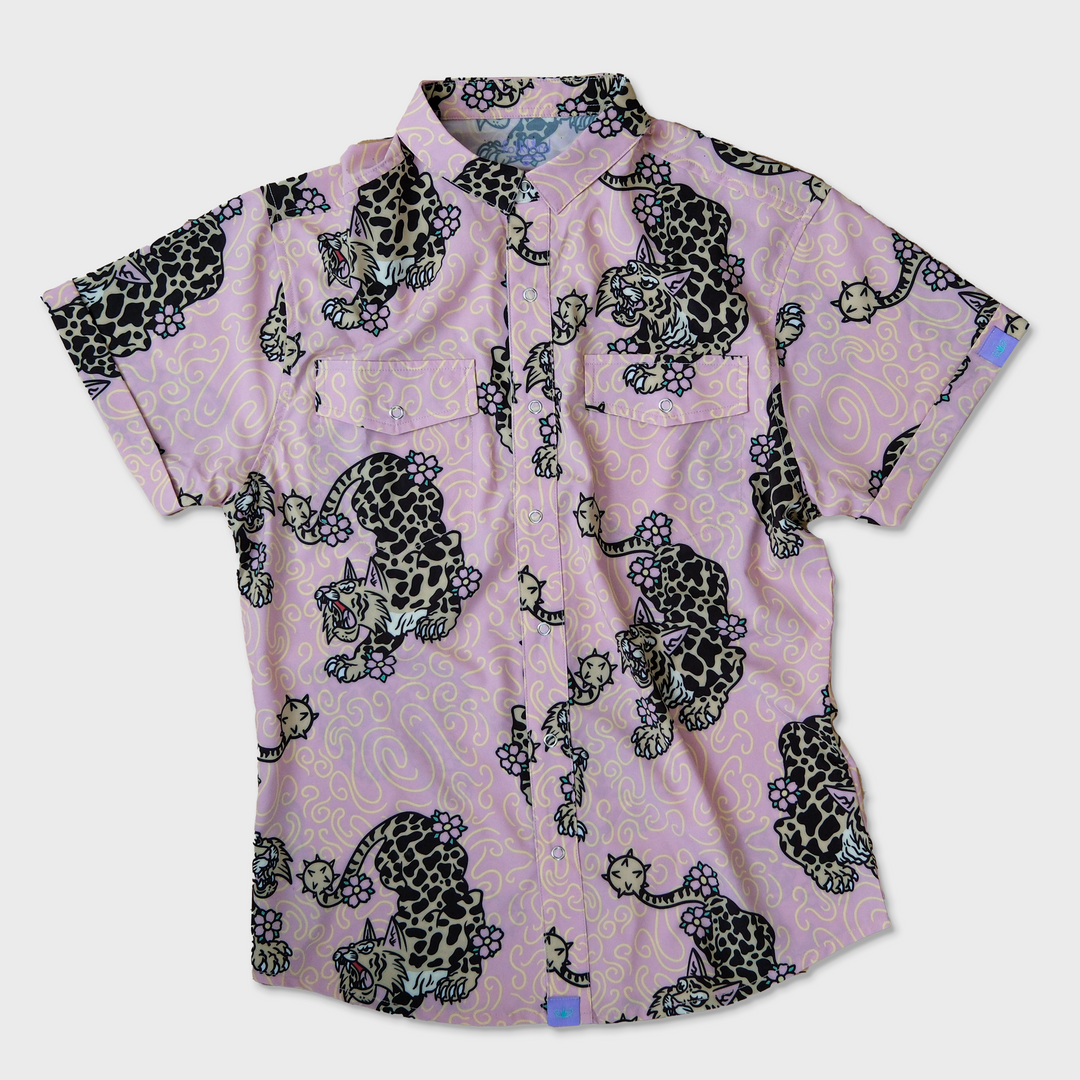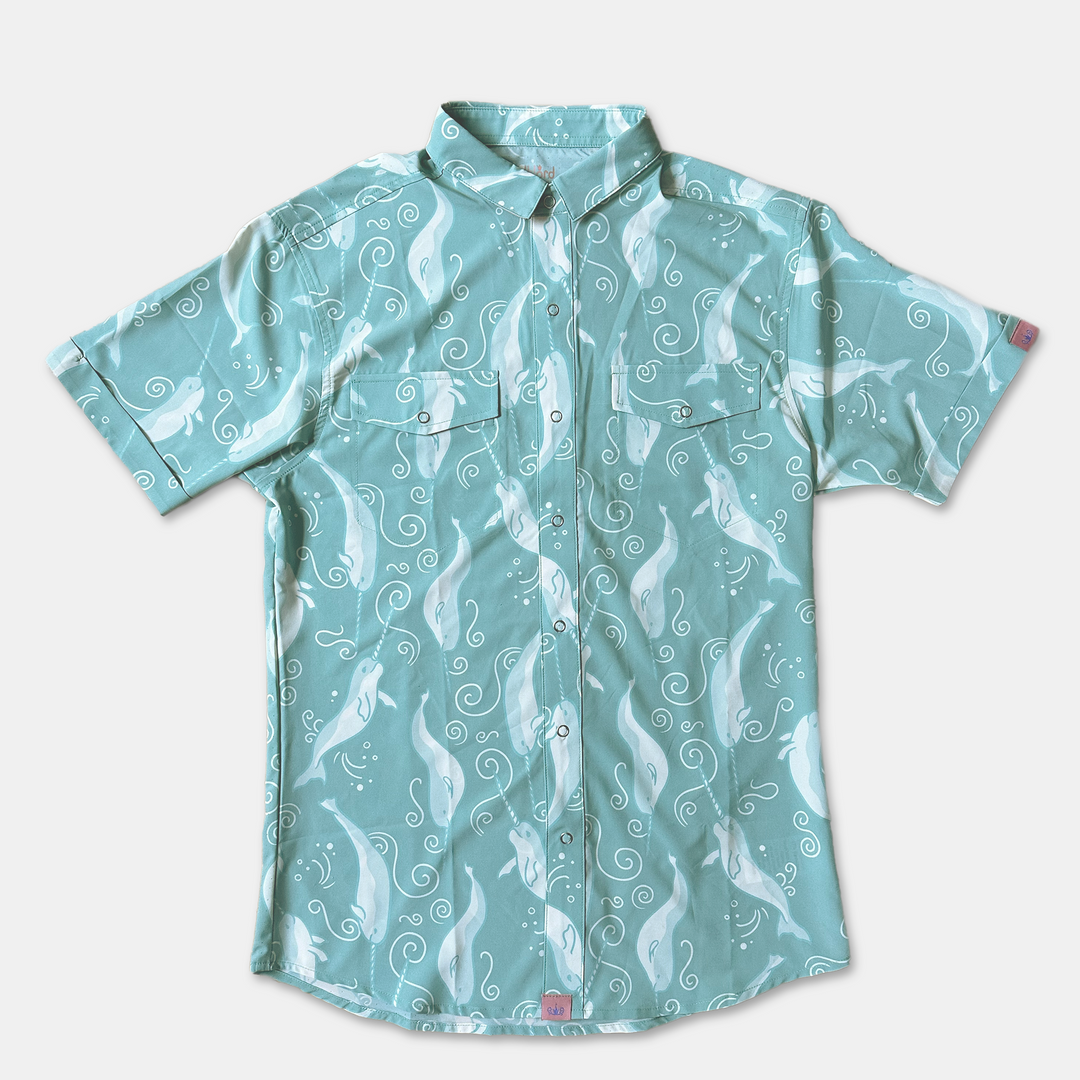KELPIE

Giddy up! Introducing… the kelpie! And not the dog. Think more aquatic. Think more equine. Okay, think less seahorse. Now think more seahorse. Got it? Whatever, just keep reading.
In Scottish folklore, the kelpie is a dangerous shape-shifter that appears to its victims on land as a horse before luring them to their watery graves. However, if you’ve got a magic bridle handy, you could catch one to be safely carried across a river; or it could help haul your belongings if you were moving apartments that weekend. Or, maybe the creatures were out on Loch Ness saving children from drowning. A kelpie might also shape-shift into a man, but when you mentioned he had hooves instead of hands, or stank like seaweed and brine, he was quick to divert the conversation. Seems like over time, everyone had their tale to tell.
But Scotland wasn’t the only place haunted by the beasts. According to Etruscan, Phoenician, Roman and Greek mythology, the hippocampus (or hippocamp) tormented sea farers as well. Some say a key difference is that, like alligators versus crocodiles, kelpies swim in fresh bodies of water and hippocampuses give more saltwater beach-bum vibes (Hot Hippocampus Summer anyone?). The Gaelic colpach (colt) seems to be the derivation of the name kelpie, whereas in Greek, hippo means horse and campus means sea monster. Does this Grecian namesake have any connection to the part of our brains in charge of regulating emotion and long-term memory? Possibly—look, this is a free blog article, how much research do you want? But it does make you wonder about the strange semantic connection between a core neural processor that helps define who we are, and a shape-shifting demon from the underworld.
Kelpies have been rethought and redesigned throughout tales, sometimes with hooves, sometimes as humanoids, sometimes with a Medusa-like mane of serpents. Sometimes they’re scary and sacrificial harbingers, and sometimes they’re protectors of Scottish youth. These mythical mashups are no strangers to pop culture either. Poet Robert Burns was mentioning kelpies back in the 1700s before it was cool, and they even show up in the Harry Potter books.
Whichever story strikes your fancy, it’s clear that the legend has persisted because of its ability to shape-shift and mold to its teller and its listeners, and reinvent itself over time. So the kelpie lingers on, both in icy black waters and our collective cultural hippocampus.
See you out there.































